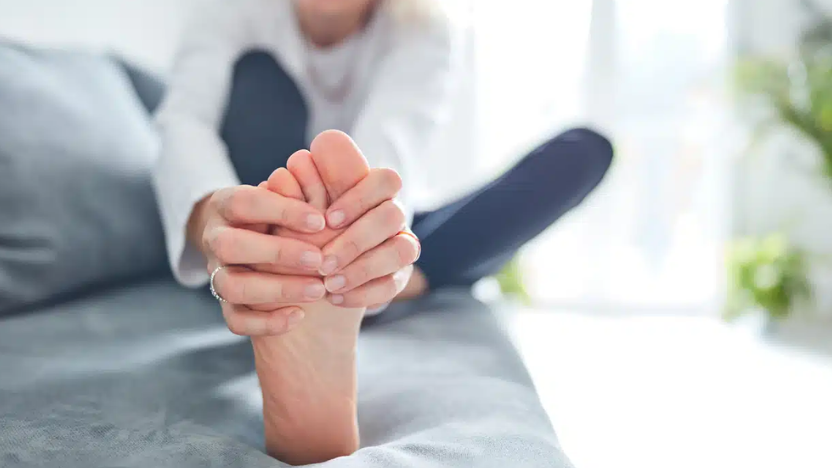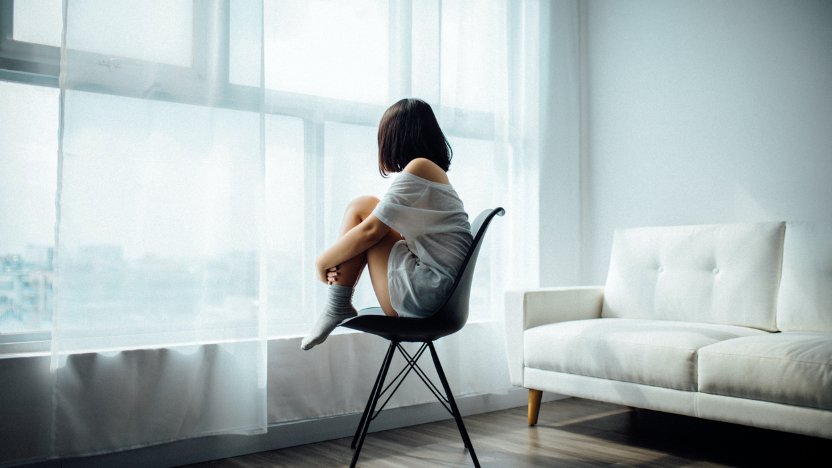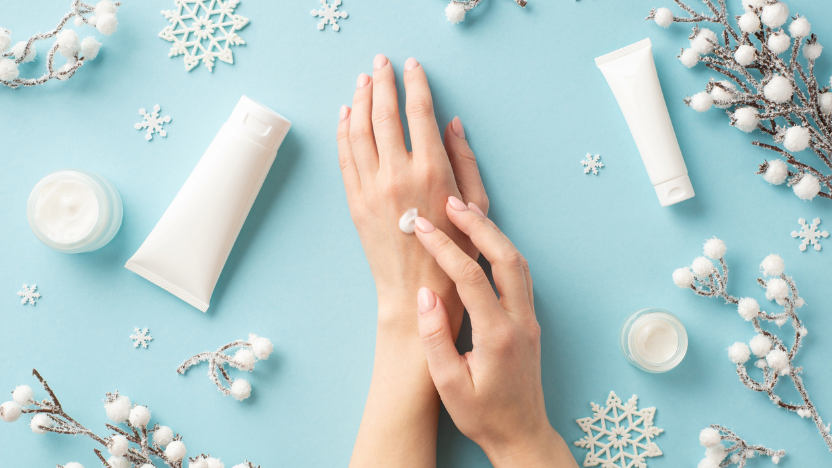Struggling with Plantar Fasciitis? Try Alleviate for Relief
By Admin
Published on 2025-06-27 00:00:00

Do you feel pain in your heel when you get out of bed? You might have plantar fasciitis, a common foot problem that makes walking hurt. The good news is, there’s an easy way to feel better right from home.
If you’re feeling pain in your heel when you get out of bed in the morning, that could be a sign of plantar fasciitis. It is a common foot problem caused by inflammation in the tissue that connects your heel to your toes. It can be experienced by anyone, especially people who walk for long distances or wear unsupportive shoes. To get rid of it, many people try basic treatments like ice, painkillers, or shoe inserts.
Yes, these might help for a while, but they don’t fix the real issue at its roots. That’s why many people and even physical therapists are recommending a full home treatment approach from Alleviate. Its Plantar Fasciitis System 2 offers lasting relief from your pain. This product let you exercise and lets you do any activity without worrying about your pain.
What Makes the Plantar Fasciitis System So Effective?
Alleviate plantar fasciitis systems don’t just fix the issue temporarily; they help fix the problem at its core. This kit works like a real physical therapist, but you don’t need to wait in line or stand in line. Plantar fasciitis occurs when a thick band of tissue on the bottom of your foot—called the plantar fascia—gets sore or swollen. This tissue supports your foot arch and helps you walk. When it gets irritated, it can cause sharp heel pain, especially in the morning or after long-sitting. It often occurs when you stand for too long or walk for hours—this all-in-one solution fixes the issue from its root..
How to Alleviate Plantar Fasciitis System 2: Ease Foot Pain
If you're dealing with foot pain, Alleviate can help. It's a 3-in-1 home treatment that supports your foot. Here’s how it helps with pain and guides you through easy healing steps, all from home.
Helps Support Your Foot
The soft brace keeps your foot in the right position and gives support to your arch. It works like the special tape that physical therapists use. It gently lifts your foot and takes pressure off your sore heel. This makes walking or standing feel better. You can wear it during the day or even during rest, and it helps your foot rest and heal with less pain.
Helps Relax Your Foot
The foot massager is designed to press on the sore, tight spots in your foot. It helps loosen up those painful areas so your foot feels more relaxed and not so stiff. When you roll it under your foot, it helps the blood flow better and eases the muscle pain. Just using it for a few minutes can help your feet feel better and more comfortable.
Easy Exercises at Home
The app shows you easy exercises made by real physical therapists. You can follow a step-by-step guide to build your daily routine that supports your foot health. These exercises help stretch and strengthen your foot so it can heal the way it should be. Just open the app, exercise for a few minutes, and it can help your feet feel better over time.
- The Loft 2 Brace helps your foot feel better fast.
- The Arch Massager helps your foot heal quickly.
- The Alleviate App guides you through easy exercises.
Dealing with plantar fasciitis can make walking, standing, or even getting out of bed really painful, and Alleviate understands it. Its Plantar Fasciitis System 2 is an easy-to-use treatment you can try at home. It gives your foot support, relaxes tight muscles, and teaches you simple exercises to fix the problem from its core. So, if you’re done trying numerous solutions, this is the right time to give Alleviate a try—it might be the right solution you’re searching for.
Alleviate has an affiliate program, and we are affiliated with them. As an affiliate partner, we’re excited to share this information with you. When you click the following link, you may get discounts on your purchase. We may earn a small commission at no extra cost to you.
Stay tuned to ByteCrunchy to explore more about foot pain solutions.
7 Ways to Beating the January Blues to Make your Beginning of the Year Brighter
By Admin
Published on 2024-12-02 00:00:00

The festive joy of Christmas brings excitement, gatherings, and cherished memories. However, once the decorations come down, many people find themselves feeling low, tired, and unmotivated. It is commonly known as the January Blues. Here you can learn why this happens and also learn practical tips to help you beat the winter gloom and stay positive.
Christmas in particular is something extra special. Throughout the whole of December, people enjoy putting up not only a tree but also a mood for the upcoming celebration. These include the fun of attending functions and office parties, gift-giving, and giving out sweets and other items. We all enjoy a series of events where we gather, giggle, get outside, and meet others. Nonetheless, after the booked celebrations are over, many people are left with weakness and certainly, not to mention the “January Blues.” It can't be wrong to say that once the excitement of the Christmas season is over, the chances are most probably getting towards January Blues. Here I want to share my thoughts about January Blue and why it happens. I'll also give some tips to beat them; just keep reading.
What Are January Blues?
The January Blues are a remedy for holiday overstimulation and include irritability, fatigue, loss of energy, and sadness. This change of mood is a result of factors such as a decrease in the number of hours of sunlight, low temperatures, and flopping of the holiday buzz. For some, they feel even worse right after holiday spending or when they are unable to meet their strict New Year’s goals. It is usual for students to go through such a phase, but simple identification of the problem along with its causes will assist in dealing with it tractably.
How January Blues Affect Mental Health
The January blues can have a very disturbing effect on mental health. Continued affection is characterized by hardness, pending of time, eagerness, weariness, and aversion to life responsibilities. In some cases, it might cause some forms of SAD, seriously linked to lack of light in the winter months. The increased stress can also deepen other mental health issues. So it is important to attend to blue feelings as soon as possible.
Ways on How to Have Fun during the January Blues
Even when it is cold outside and January really is something of a depressing month, there is always a way. Yes, there is always the possibility to make yourself feel happier. You can get the year off to the right start. Here are some practical strategies:
1-Be Routine
Practical activity as routine offers rain quantity. There is a need to be consistent with waking up at the same time during the day in order to help regulate the body clock. Take care of yourself; try to exercise, meditate, or do something that makes you happy. Adults should make sure to get quality sleep; that means getting 7-9 hours of sleep for each night’s rest.
2-Preventing Overcommitment
Avoid making unattainable resolutions that can stress you at the beginning of the New Year. Concentrate on objectives that are realistic and quantifiable and which can therefore be stakelike and rewarded. For example, instead of setting vague New Year goals like “I will get fit,” shoot at something like “I will walk for thirty minutes thrice a week.”
3-Get Light
Lack of light during wintertime contributes to a poor mood. Whenever possible, get out of the house during the day for at least a few hours. A short walk may also do the trick. Light therapy boxes should be used to help you escape the darkness and increase your energy levels. It is also possible to redesign your workplace near a window to get the most out of natural lighting.
4-Exercise
Endorphins, the body’s own natural mood enhancers, are released when you exercise. Some people prefer certain exercises, such as yoga, jogging, or a simple home workout session. All these to overcome the blues of feeling dragged back. Consequently, doing any type of activity can enhance your energy, whether walking, stretching, or bending, among others.
5-Eat Healthy
Eating good food is very important for your well-being. A well-balanced diet including essential fruits and vegetables should be taken. A healthy diet can control the rises and dips in blood sugar, which affect your mood. Do not take foods with a lot of sugar because they bring along with them what we refer to as energy crashes. Instead, turn to foods containing omega-3 fatty acids and vitamins, which are vital to a functioning brain.
6-Practice Thankfulness
Major on the things to be thankful for. On small achievements, for instance, you are likely to ponder your achievements in a task or the quality of the last meal prepared. Two of these tips involve getting into the habit of writing down what you are thankful for to gradually make the brain train more positive.
7-Stay Connected
Interacting with other people influences the quality of human life. Try to get in touch with friends and other relatives; if it’s possible, just call or make a video call. Participation in some activities, for instance, participation in community activities and forming clubs, could also go a long way toward reducing loneliness.
Why It Is Necessary to Treat a Case of January Depression
That is why you must not disregard January Blues, as its consequences may have an impact on your continued mental well-being. These feelings, if not addressed, may cause chronic stress, anxiety, or depression. If you are more proactive in managing your mood and energy, it will be possible to survive this stage while also investing in your mental health.
Creating a Practice of Development for January
January doesn’t have to be so bad. Do not consider this a time of reckoning and accusing; rather, consider it a time of self-actualization. Engage in activities that have never really appealed to you before, set realistic goals, and maintain a healthy way of life. It doesn’t take much to turn January from a month of dreariness into a month of optimism and planning. Remember, it is okay to feel low after the holiday high. Do not think that others do not feel like that too. Always remember that if days are still difficult now, then little actions toward your well-being will eventually bring light to your path.
Stay tuned to Byte Crunchy to explore more tips and tricks to beat the January blues.



